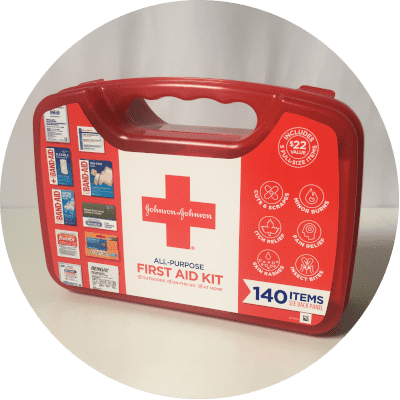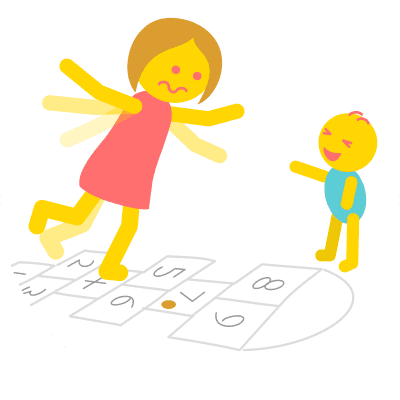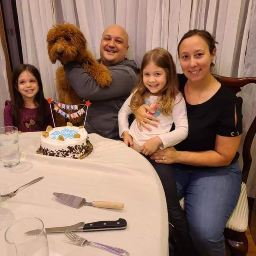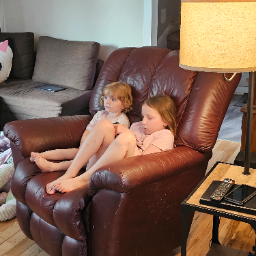How to Babysit a Toddler (23 Tips and Top 5 Activities)


Written & Illustrated by
Matthew James Taylor
Kidsit Founder, General Manager

Toddler babysitting video by
Lydia Kutz
Babysitter, Infant Swimming Resources Instructor

Medically Reviewed by
Gina Maria Jansheski, MD, FAAP
Board-Certified Pediatrician, Medical Reviewer
Key Takeaways
- Toddlers (ages ~1–2 years) require constant supervision - show patience, and provide structure as they explore, test limits, and develop language.
- Before babysitting, clarify the rules - learn their routines, medical needs, and safety guidelines from parents.
- Keep toddlers engaged with short, simple activities - singing, sorting, counting, crafts, and alternate play with movement and rest.
- Be consistent with discipline and limits - model respectful, calm communication.
- Anticipate basic needs — snacks, diaper checks or potty breaks, fresh air, and naps - and maintain flexibility.
- Communicate with the parents during and after the job - stay open to feedback and be willing to adjust your approach.
A toddler is a young child between the ages of 12 and 36 months. The term comes from the word "toddle," which means to walk with unsteady steps, something that kids definitely do at least during the first part of this stage!
You've heard about the "terrible twos" before, right? It's a time in a child’s life when there is lots of social, cognitive, and emotional development going on, and the change is very rapid.
How do you babysit a toddler? Toddlers come with their own unique set of challenges. You'll need to watch them constantly because they are mobile. Toddlers who are able to walk can get into a lot more trouble! If they aren't toilet trained yet, you'll also need to change their diapers when needed. They are beginning to talk now, too, and they start asking a boatload of questions. In a nutshell, all toddlers require constant attention and support.
Kidsit babysitting statistics
83.86% of babysitters list toddlers (1 - 2 years old) as a child age they're happy to work with.
(Babysitting statistics calculated weekly from our live member data — Updated 11 Jan 2026)
In this article, I'll share essential things to keep in mind when you're babysitting a toddler, as well as 28 tips to make your job a bit easier.
How To Entertain A Toddler
Lydia has been working in the childcare industry for 15 years, and owned a childcare agency in Florida, USA for 7 years. She has many years of experience babysitting toddlers, in this video she gives her best toddler entertainment tips
We all know how busy 2-year-olds can be and how little their attention span is, so as babysitters, it's really good to keep in our back pocket a long list of short activities for these kiddos

Babysitter, Infant Swimming Resources Instructor
St Petersburg, Florida, United States
Here are our top 5 toddler activities to keep them busy and entertained:
1. Sing Them a Song
Just like younger babies, toddlers love when you sing them a song.
Ask parents before you leave about some of the child’s favorite songs. Or just sing them a classic nursery rhyme that they're likely to know. If they're old enough, they might even be able to suggest one of their favorite songs themselves.
Toddlers love singing, moving around, dancing, and clapping to songs.
Wheels On The Bus, Old MacDonald’s, The Hokey Pokey, The Itsy Bitsy Spider, and similar songs are all tried and tested favorites for young children.
2. Play Sorting Games
Older toddlers (around 2 years old) can start to play sorting games. Toddlers can be taught how to sort their toys in numerous ways.
Try sorting by different colors, sizes, types of toys, and other categories to really give that toddler's brain a workout!
And it doesn’t just have to be toys; you can get them to separate different colors of wooden blocks, their clothes, or even their food during snack time.
Try out our list of over 200 kids’ games and activities and click the 'Toddler' filter to show toddler-friendly ideas only. You'll never run out of ideas again!
3. Read a Book to Them
Most small children love to have books read to them. It can even be a good way to calm down very active toddlers and get a bit of a break from chasing them around.
Cuddle up on the couch or floor with the toddler, a blanket, and their favorite doll or stuffed animal and read with them.
Anything by Dr. Seuss or with pictures of animals is a great choice. Get them to point out different animals to you and ask them what noise each animal makes, how it moves, and even what it likes to eat.
See our recommended books for babysitters for more book ideas, including follow-along activities that kids love.
4. Try Some Counting Games
Some 2- or 3-year-olds might be able to count to 10 from memory, but most still don't quite have a handle on counting numbers of random objects.
If the toddler you're watching seems interested in numbers, you can try counting toys and other objects up to 5 or 6 or even 10.
You can try splitting piles of toys into groups of two or three and count them together to give lots of clear examples of different numbers.
Ask them to give it a try and count as best they can, but don't make a big deal about mistakes or if their numbers are mixed up. Toddlers are still developing and don't usually have a full grasp on numbers yet.
5. Teach Them Colors
Along with sorting objects and counting, toddlers are also still in the process of learning colors.
When a child picks up a toy, say the color. “I see you are going to play with your green truck now!”
They'll start to realize what you're doing, and you can begin to ask specific color-related questions like "Which toy is green?" or “What color is your shirt today?” and "Can you put all of the blue toys together?" That way, they can learn to identify the colors around them.
See our complete list of over 200 kids activities for more ideas.
23 Tips For Babysitting A Toddler
1. Understand Your Abilities and Limitations
Make sure that you're actually comfortable babysitting a toddler before you volunteer your services!
If you are brand new to babysitting, maybe you just aren't ready yet, and that's okay. Start off by taking care of some older children first to make sure that you won't be overwhelmed, and then you’ll be ready to consider babysitting infants and toddlers.
Ask parents specific questions about what they want and expect from a babysitter for their toddler. That way, you can figure out if you'll actually be able to meet their needs and if you're the right fit for the family.
You should always be asking how many children you'll be watching and what their ages are. Supervising one toddler presents different challenges compared to babysitting a toddler and an infant, a toddler and a preschooler, or even two toddlers!
2. Make Sure You're Well Informed
Toddlers have very special needs that are quite different from children of other age groups. Be aware of them so that you'll be able to keep the child that you're watching safe.
Learn about all the potential hazards to toddlers and things that you'll need to be informed about, such as allergies, that are specific to the child you are sitting.
If you've never dealt with toddlers before, talk to other more experienced babysitters to hear some of their stories and get their advice. Consider taking a babysitter training or child safety course to learn more about the needs of toddlers.
The Red Cross or your local community center likely offers programs on how to supervise children effectively. These classes are relatively inexpensive and can look impressive on your babysitter resume, as well as enhance your confidence.
See my recommended babysitting courses and read my article on babysitter qualifications to learn about other training that might be right for you.
Also, learn about physical and mental development in kids by reading our babysitter’s guide to child psychology.
After you're done reading this article, you should have a pretty good idea of some of the unique challenges that you could face while babysitting a toddler.
3. Be Prepared for Anything
It's important that you have phone numbers for the cell phones of each parent and at least one other family member, the poison control center, the closest emergency and fire departments, and the child's doctor on hand. And don’t forget about 911. These numbers will be important for questions that might come up, and critical in the case of an emergency.
You’ll want to keep these numbers right next to the home phone if the family you're babysitting for has a landline. You can post them to the refrigerator or store them in your contacts on your cell phone.
Learn what kinds of foods and toys can be choking hazards to toddlers, and just avoid them altogether. Taking a proactive approach can help eliminate most risks before they become an issue.
See our article: How to be a safe babysitter for more details.
Make sure to ask for a list of the toddler's allergies, including foods, pets, seasonal, and any other kind. You never know what type of allergens you might encounter, especially if you're taking the kid out to the playground or the park while you're babysitting.
You should also be aware of any medication the toddler is taking. Ask the parents to go over it with you and write it down. Have them show you the location of “as needed” medicines, like ibuprofen or benadryl, that might need to be given if the child develops a fever or allergic reaction. Generally, parents will want you to call them first and they will decide if the medicine should be given and in what dose.
Download our handy parent details form and get mom or dad to fill it out before they leave, it's a great way to get all this important information in one place.
4. Bring a First Aid Kit
Parents will likely have home supplies, but it's a good idea for you to have your own first aid kit on hand just so that you know where it is, and you can quickly get ahold of what you need. It should not have any oral medications in it, but just bandaids, bandages, gauze, scissors, hand sanitizer, and some neosporin.
It's a good idea to cover your first aid kit with stickers and bright colors to make it look more fun. And be sure to stock up on colorful band-aids featuring cartoon characters if you know you'll be watching younger children. Make sure, however, to keep it out of reach of the little ones at all times.
Younger kids will often look to you first for a reaction when something bad happens before they decide how to react themselves. So if a child has a fall and gets a minor cut or scrape, don't make a big deal about it. Just say something like "uh oh!" and smile, and they'll likely laugh it off instead of bursting into tears over it. Then you can quickly get them a fun band-aid, smile when you are putting it on, and they'll be ready to start playing again.
See the best first aid kit for babysitters here.
To remember what other important things to bring, read our article: What should I bring to a babysitting job and make a list.
5. Go Over the Ground Rules Up Front
Speak with the parents in advance to learn as much about their rules and expectations as possible, both what they expect from the child and also from you.
Avoid undermining parents by breaking rules that they have, like not eating junk food before bed, or not exceeding allowed screen time with TVs and tablets. Not following the rules bad for the toddler and makes it harder for parents to continue reinforcing them later on. And remember, if a child is old enough to talk, they might tell mom or dad about it.
Kids at any age like to test limits to see what they can get away with. Sometimes, what they tell you about the rules is not true. Don't believe them when they say, "Mommy always lets me do it."
6. Never Leave Toddlers Alone
Just like infants, toddlers are still too young to be left alone for any amount of time.
You need to do more than just be in the room with them or the next room. Because they can now get from one place to another, is necessary that you keep an eye on them at all times and stay alert.
Don't leave them in another room for even a second. You never know when they might be about to trip and fall, bump their head, pull an object off the table, open up a cabinet they aren't supposed to get into, pick something off the floor and put it into their mouth, or any number of other potentially dangerous actions.
If you have to leave the room, take the toddler with you, even if you have to use the bathroom. The amount of mischief a toddler can get up to in the time it takes to go to the bathroom is shocking!
Keep any dangerous objects far out of the reach of a toddler to prevent them from getting ahold of them. Make sure all cabinets are closed with the safety locks fastened. And for any that don’t lock, make a mental note to watch those carefully.
When you're outside of the home, keep toddlers close to you and your phone put away, so they've got your undivided attention. Stay off of your cell phone entirely, as it can be distracting. It only takes a second for a child to take a leap off the playground equipment and break their leg!
7. Give Them Snacks
Speaking of snacks, toddlers need to eat a lot more frequently than adults do, but they often eat less at a time. So be sure to give them snacks between meal times if they ask for it or seem like they need it.
Parents should be expecting their kids will need to snack while they're gone, so talk to them about what kinds of foods and drinks they prefer their child to snack on and when to give them. Write down their instructions, and follow them closely. Pay special attention to any allergy information.
When preparing snacks for a toddler, you try to strike a balance when it comes to size. You don't want to cut their food so small that they can just swallow it down without trying to chew it a bit first. But you also don't want pieces so large that they might choke on them.
Some common snacks for toddlers include animal crackers or cut up pieces of fruit. Always offer them something to drink. Be sure to watch them carefully while they're eating, and know how to clear objects out of a child's mouth if they start to choke.
If you're preparing food for a toddler, make sure you read this first: food safety guide for babysitters.
8. Regularly Check the Diaper
The majority of toddlers under 2 years old won't be potty trained yet.
You'll want to check their diapers regularly and change them right away if needed. Usually, a strong smell is a good indication. Don’t wait too long, even if they have only urinated, because walking around in a heavy, wet diaper can cause diaper rashes.
For older toddlers who were recently potty trained, you'll want to watch for signs that they might need to go and ask them regularly if they need to use the bathroom.
It's better to ask too often than to wait for kids to let you know that they need to go themselves. If you wait too long, you might not be able to get them to the toilet in time and will be left with a mess that you'll have to clean up.
Need help changing toddlers? Read our easy guide to changing diapers and download our handy checklist for your babysitting binder.
9. Get Some Exercise and Fresh Air
If the weather is nice and the road is safe, load the toddler you're babysitting up in a stroller and go for a walk to get some exercise and fresh air.
You can make it engaging by creating a safety game out of crossing the street. Have them look in each direction with you while you talk about what to look for. Even at a young age, when they are in the stroller, it's good to start reinforcing the idea of checking both ways before you cross the road.
You can point out interesting things along the road or sidewalk during your adventure. If they are old enough, you can ask them to tell you the color of that house or point to something blue. This way, you can engage them in language and learning by using the local environment.
If they're able to walk, you can hold hands with the toddler and take them on a brief stroll. But, because they have to take many steps for each one of yours, they usually can't go much further than to the end of the road and back.
You can also take them to run around and burn off extra energy outside, although you should be careful with this. If you're doing it before bed, you'll need to let them spend an extended period running around to get all their energy out.
If you only briefly let them run around, it might actually make them more hyper, and then you'll have trouble getting them to sleep.
10. Let Them Be Creative
You can bring out a toddler's artistic side with some crayons and blank paper.
Ask them to draw all kinds of things like their pet dog, their family, or their favorite toy. Or ask them what other types of things they enjoy drawing.
You can also let kids play with blocks to build up towers and knock them down. It’s good to encourage them to try and make it as tall as possible. That way, they practice their spatial orientation and balancing skills, as well as their creativity.
Toddlers can even do some basic crafts, as long as they're age-appropriate. It’s helpful for you to do the activity along with them, so they can learn by watching you.
These activities should not require sharp scissors, or ink that they can spill. It is a good idea to have them do it in a safe area, like a tile floor, so they don’t stain or damage furniture.
See our recommended craft ideas for kids if you need inspiration.
11. Don't Give Toddlers Too Many Options
If you give toddlers a big pile of toys to choose from, they'll only play with the toys for a few moments before they get bored, and the whole house will be a mess.
When toddlers want to play with toys, present them with one at a time. That way, they'll stick with one toy until they're bored, and then you can swap it out for another one. As they get older, you can start offering them 2 or 3 toys at a time because they'll often want to play with multiple toys together.
When it's time to clean up, make a game out of it and get the toddler to help you. Making a fun game out of cleanup time will make them feel good and want to help again in the future.
12. Be Careful with What You Say
Toddlers are at an age where they're starting to pick up a lot of words, and you never know what they might repeat back to their parents later.
Don't call toddlers that you babysit names like “brat” or any other negative words. Most families also try to tone down more rude sounding words as well. For example, try saying "silly" instead of "stupid."
While kids should have an open dialogue regarding bathroom activities, especially while they're potty training, avoid letting them get away with bathroom talk like calling someone a "poo-poo head."
When a toddler uses this kind of speech, it can sound cute or funny to you. But try to avoid smiling or laughing when they do it, as it only encourages them to continue because they like to see your reaction. You can ask the parents how they like to handle it, but usually ignoring the rude words and distracting them with some other activity works well.
13. Have Fun and Be Active
Parents aren't paying you to just sit their toddler in front of a TV or tablet the entire time they're gone!
A good babysitter has lots of engaging activities to do with the toddlers they're babysitting.
Figure out which electronics and games are off-limits, and if the child is allowed to go to the playground. Also ask what their favorite toys or games are. Once you eliminate what the toddler can't do, planning your activities for the day will be easier.
You can go outside and look at bugs or play in the sandbox. Or if the weather outside is bad, you can stay inside and make a pillow fort.
If the toddler you're watching has a disability, then you may need to think a little outside the box to come up with some inclusive activities for them to have fun.
Be ready to change things up frequently. Toddlers have super short attention spans and will want to move on quickly from one game to the next.
Toddlers love to play with blocks, rattles, books, and even pots and pans. So get creative!
14. Continually Reinforce Rules and Limits
Kids will always be attempting to push the limits. It's actually a part of how toddlers develop.
You might be tempted to try and be the "cool" babysitter by breaking their parent's rules, but if you give in to whatever the child wants, it can actually make your job a lot harder in the long run.
Kids of all ages do best when they're given structure and boundaries. It helps to teach them self-control, calms them, and gives them a feeling of safety.
As a babysitter, you'll have to learn by experience how to stick to the rules, even if you disagree with them. Being able to expertly navigate the family’s rules and limits of the household will earn you the respect of both the parents and the child.
15. Discipline the Way Parents Request
Talk with parents in advance about how discipline should be handled. Different families can have very different rules and beliefs about discipline.
Even if you think it's okay to spank, most parents these days don't believe that, and you need to respect their wishes and use other tools like time-outs or positive reinforcement instead.
It’s a good idea to plan ahead by talking through a typical scenario with the parents and how to handle it (like the toddler throws a toy when not given a cookie), so you can be ready and know what to do when it happens.
To learn effective discipline strategies, see our article: How to babysit difficult children.
16. Be Respectful of the Home
Don't go digging through the cupboards or refrigerator unless parents have given you permission. And definitely don't go snooping into the master bedroom and other areas of the house where you don't need to be!
Even though you're babysitting and they're letting you into their home, you should honor their right to privacy. So closets, cabinets, and drawers are off-limits unless they have given you specific permission to go into them for something.
You never know when a family has a nanny cam installed, and your actions may be recorded, or what random things a toddler will blurt out to their parents when they get home.
17. Be Flexible
Things will rarely go exactly as you want them to when you're looking after a toddler. Just ask any parent! Simple tasks like cleaning up a spill become a lot more difficult when you need to keep an eye on a toddler at the same time.
Try and be flexible with both the child and the parents. You might need to show up to babysit a bit earlier than expected, or parents might run behind trying to get ready to leave while caring for their toddler.
Of course, it's fair to have some limits. But parents value a babysitter who is flexible, as it can be a sign of dependability, which is an excellent quality to be known for in any job.
18. Don't Get Angry
Sometimes toddlers say things they don't mean.You have a few choices for how to handle this when it happens. You can ignore it, pretend to be shocked, or just laugh it off.
You can playfully pretend to be angry, such as acting insulted in an overly dramatic way. You can pretend to cry, and then laugh together. You'll have to find the right balance so that you aren't too serious, but also not too silly.
Don't use sarcasm, though, because toddlers are too young to understand, and it will just confuse them.
Explain to them when they do something wrong in a gentle and compassionate way. Wait to do this until they are no longer crying and everything has calmed down. Toddlers will react better to that than your taking a harsh tone.
Sometimes toddlers will do things just to get a rise out of you. They can be a bit evil at times! If you tell them not to touch something, they might turn it into a game of attempting to touch many different things just to see how you react. At that point, it's best to try and redirect their attention to some new type of game or activity.
19. Make Bedtime a Smooth Transition
It can be hard for kids to go to bed without their parents.
Don't mention their parents around bedtime unless the toddler brings it up first, as that might just make them upset and they will miss them more.
But, if they're crying for their dad or mom, you can reassure them that you're here, and it's okay. Let them know that when they wake up, their mom or dad will be home and waiting to give them a big hug. More than anything, they just need to know that their parents will be back and everything will return to normal soon.
Make bedtime easier by reading them a story, singing a lullaby, or rocking them in a rocking chair with a blanket and their favorite stuffed animal or doll.
Learn some tips for getting kids to sleep by reading our article: How to get kids to bed when babysitting.
20. Stay Organized
Things will run smoothly if you stick to the child’s usual structure and routine.
The parent should give you a schedule to follow before they leave. Each child might even have their own routine for what needs to be done hour by hour.
You'll want to make sure that naps, regular meals, and play are all at their usual times.
Know how long each nap or play session should last, what kind of food you'll be feeding them, and other details of their routine. The more your agenda is planned out, the less chance there will be for things to get out of control.
21. Be Kind and Caring
Toddlers are kind of a paradox. They're both fragile and incredibly resilient. They're highly impressionable, but they can also be very stubborn!
Toddlers are still in a stage where they're continually learning and growing. Sometimes they don't even know what they want themselves!
Be understanding when they make mistakes, a good babysitter needs to be gentle and empathetic to the toddler’s needs. Let them know that it’s okay to talk to you, even when they're upset or afraid.
See our 17 strategies for How to Calm an Upset Child.
22. Have Open Communication with Parents
If parents need a babysitter, then you'd expect they're probably doing something important and don't want to be disturbed unnecessarily. However, having an open line of communication can help build trust with parents. It shows that you care about their child and want to ensure their health and safety.
Don't feel like you need to figure everything out on your own. You should feel comfortable contacting the parents if you have any questions or concerns about discussing anything from a toddler that is crying and won't seem to calm down, to asking where they keep their extra baby wipes.
You don't want to be that annoying babysitter who is calling every ten minutes and interrupting whatever the parents are doing. But don't feel bad about needing to call at least once or twice during a babysitting shift. It’s a good idea to keep a list of questions that come up and that you know can wait to be answered. That way, when you do have to make a call, you can ask them all at once.
If nothing else, you can always call once just to check in and let the parents know that everything is going well so far.
23. Be Open to Feedback and Criticism
The first time you watch a toddler, there's a good chance you might do something that worries or upsets a parent, especially since every parent has a different set of rules and expectations for their child.
Be open to the concerns of parents. Their toddler is undoubtedly the biggest part of their world, and they only want the best for them.
Ask for clarification and figure out how you could have done it differently. Be sure to let them know that you are sorry about what happened and reassure them that you'll do better in the future.
Are you babysitting for the first time? Read my article First Time Babysitting (16 Things You Should Know) to get a basic overview of what's expected of you first.
How Difficult are Toddlers to Babysit?
We polled our babysitters to find out:

Conclusion
Babysitting toddlers is difficult but it is an important skill that all sitters should learn and, with enough practice, it will become second nature to you.
It can be challenging sometimes but rewarding too. Most sitters find that it’s often lots of fun, especially when they get to know the toddler, and they look forward to it!
Next:































